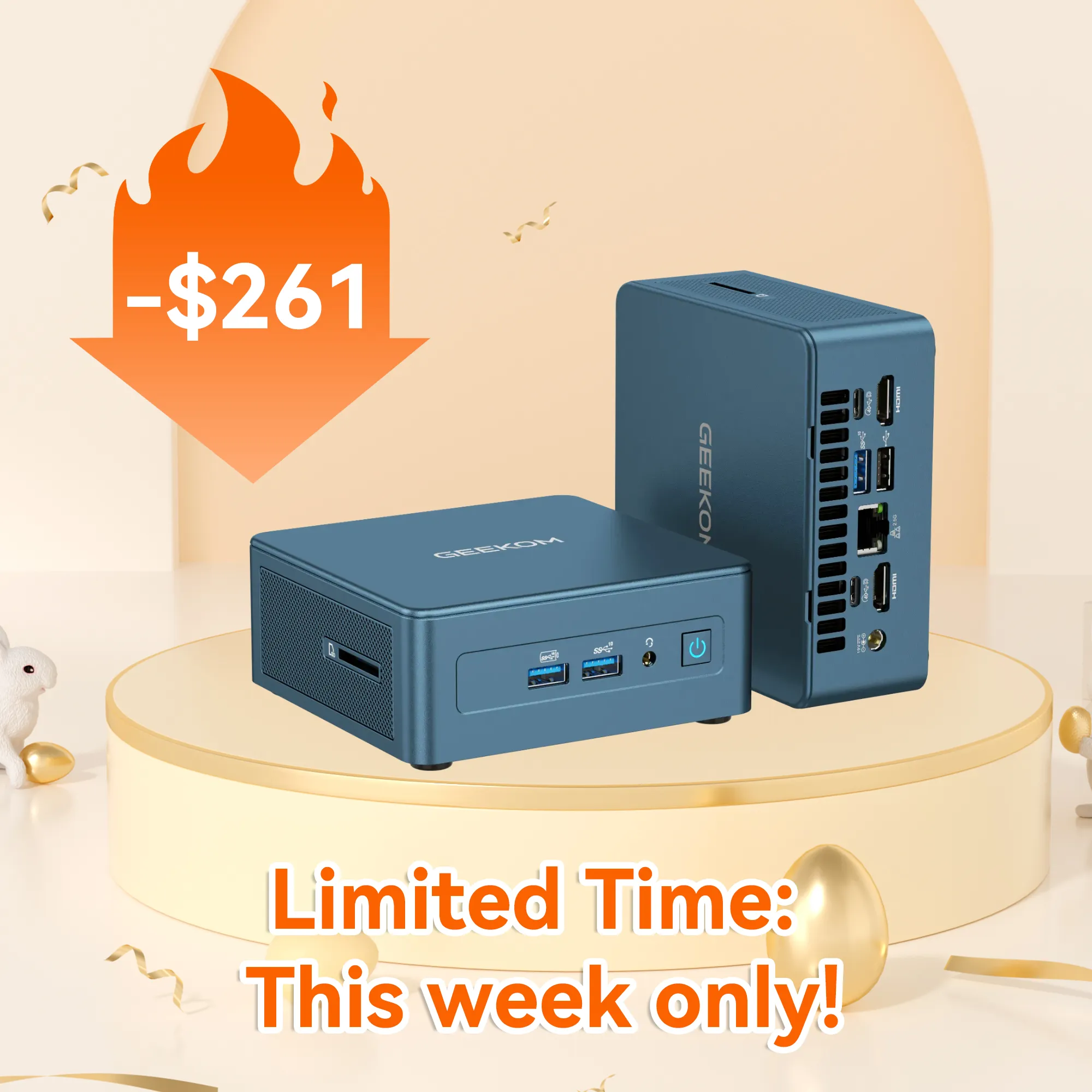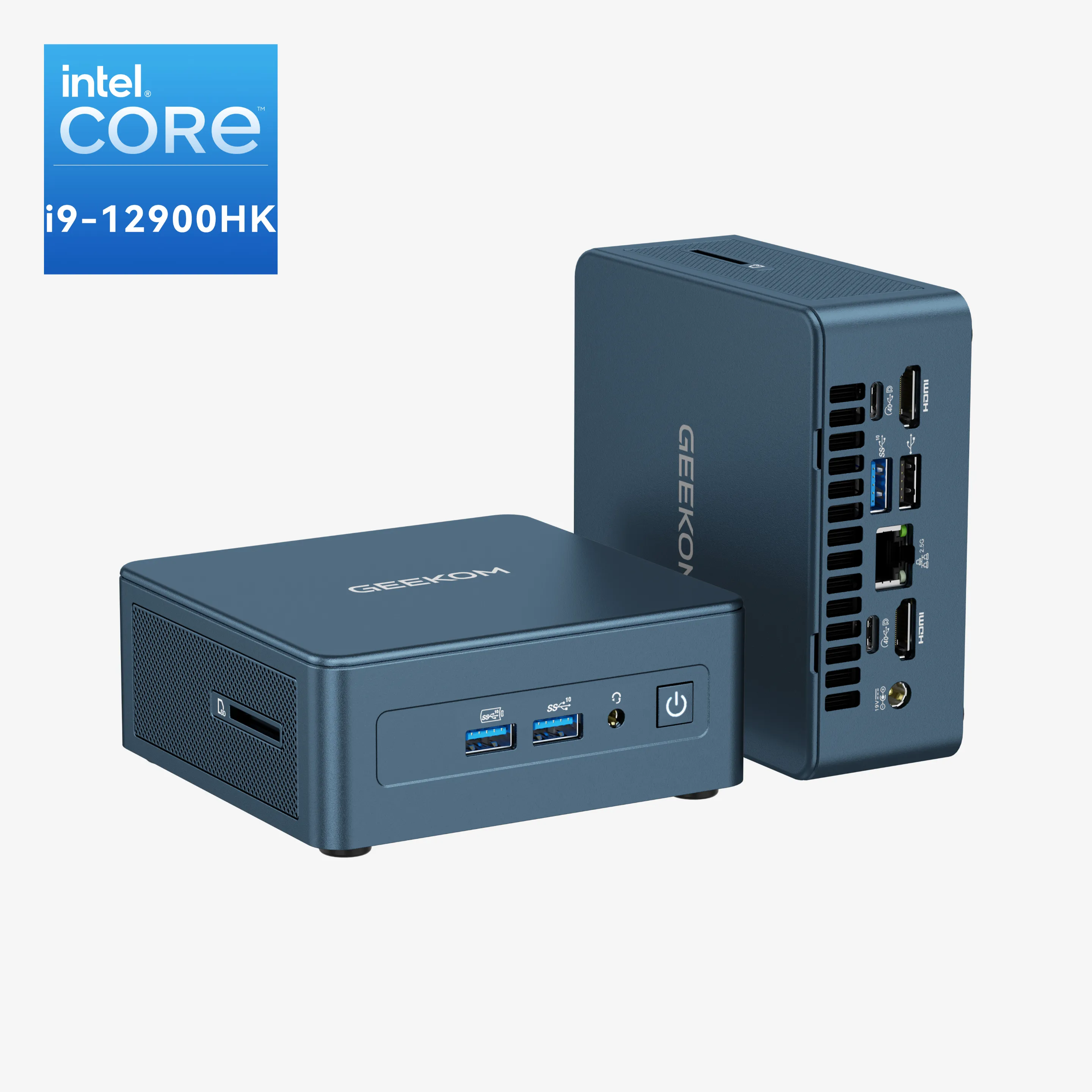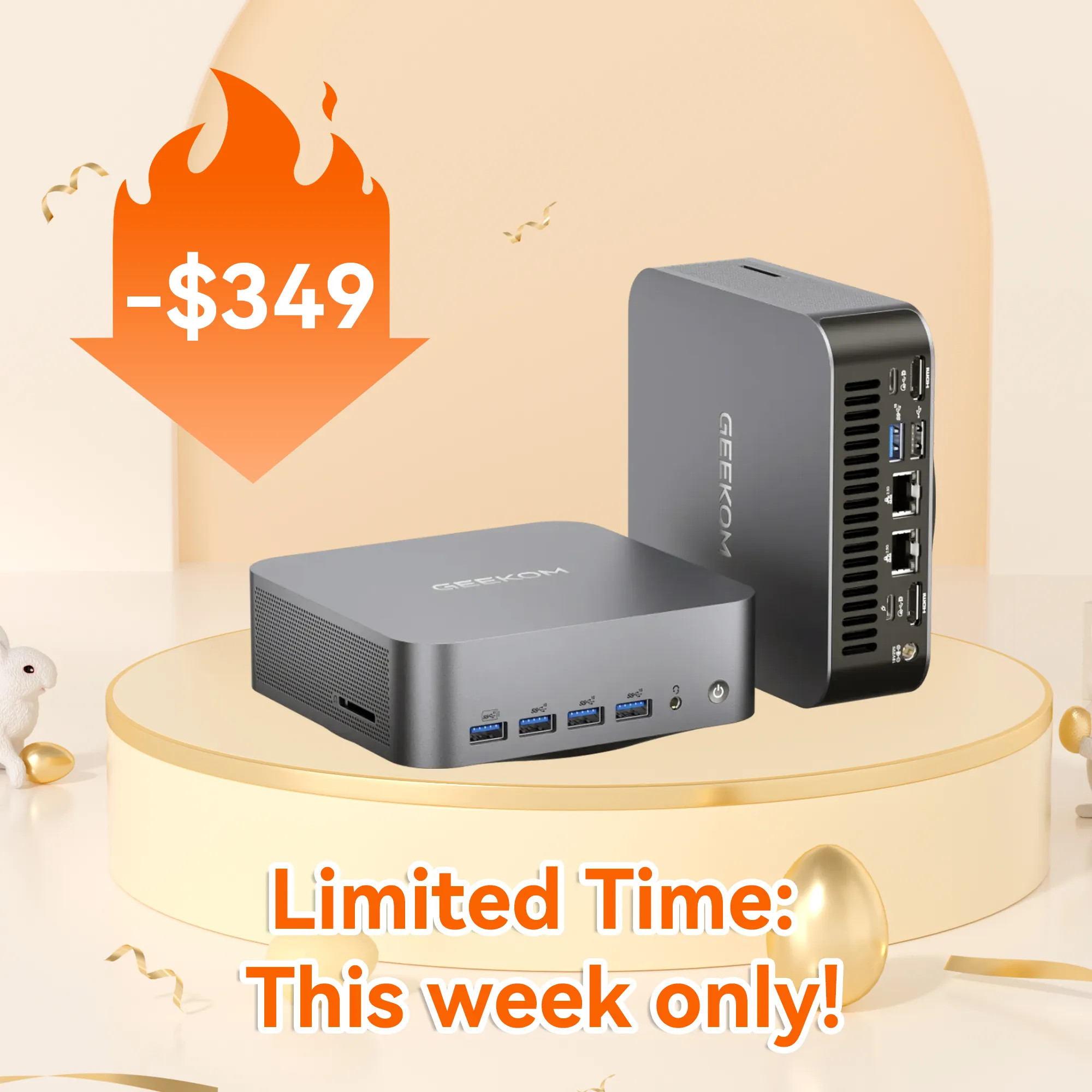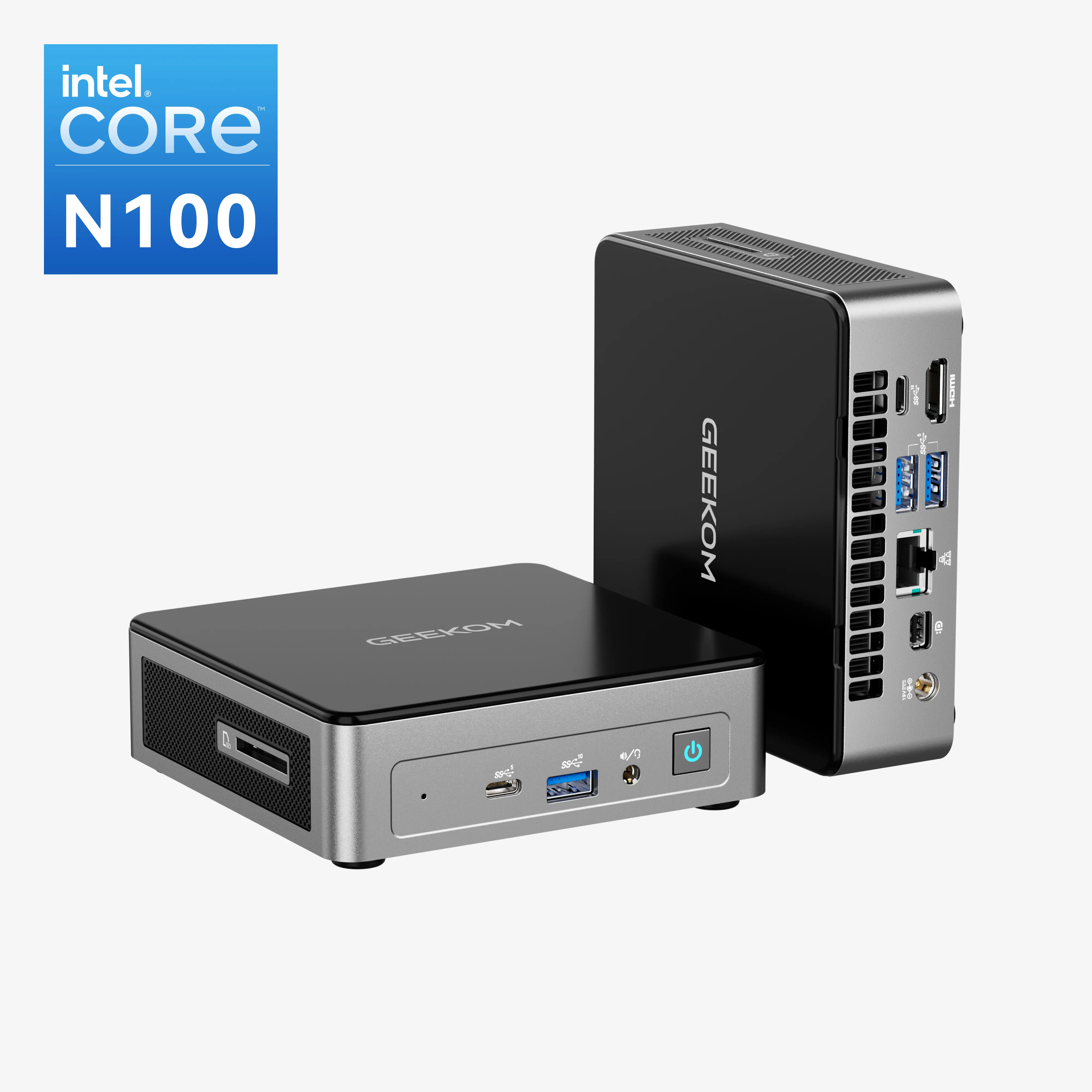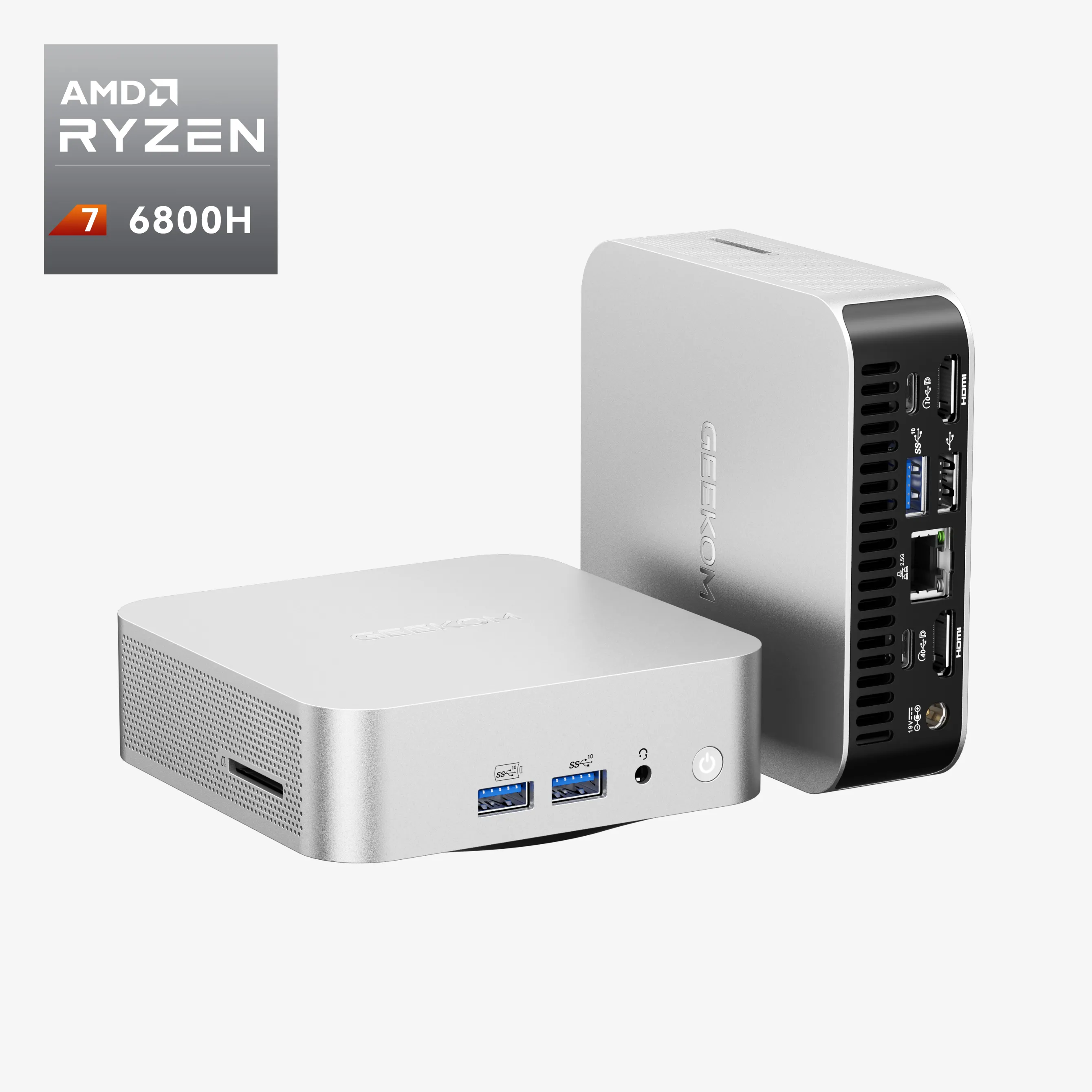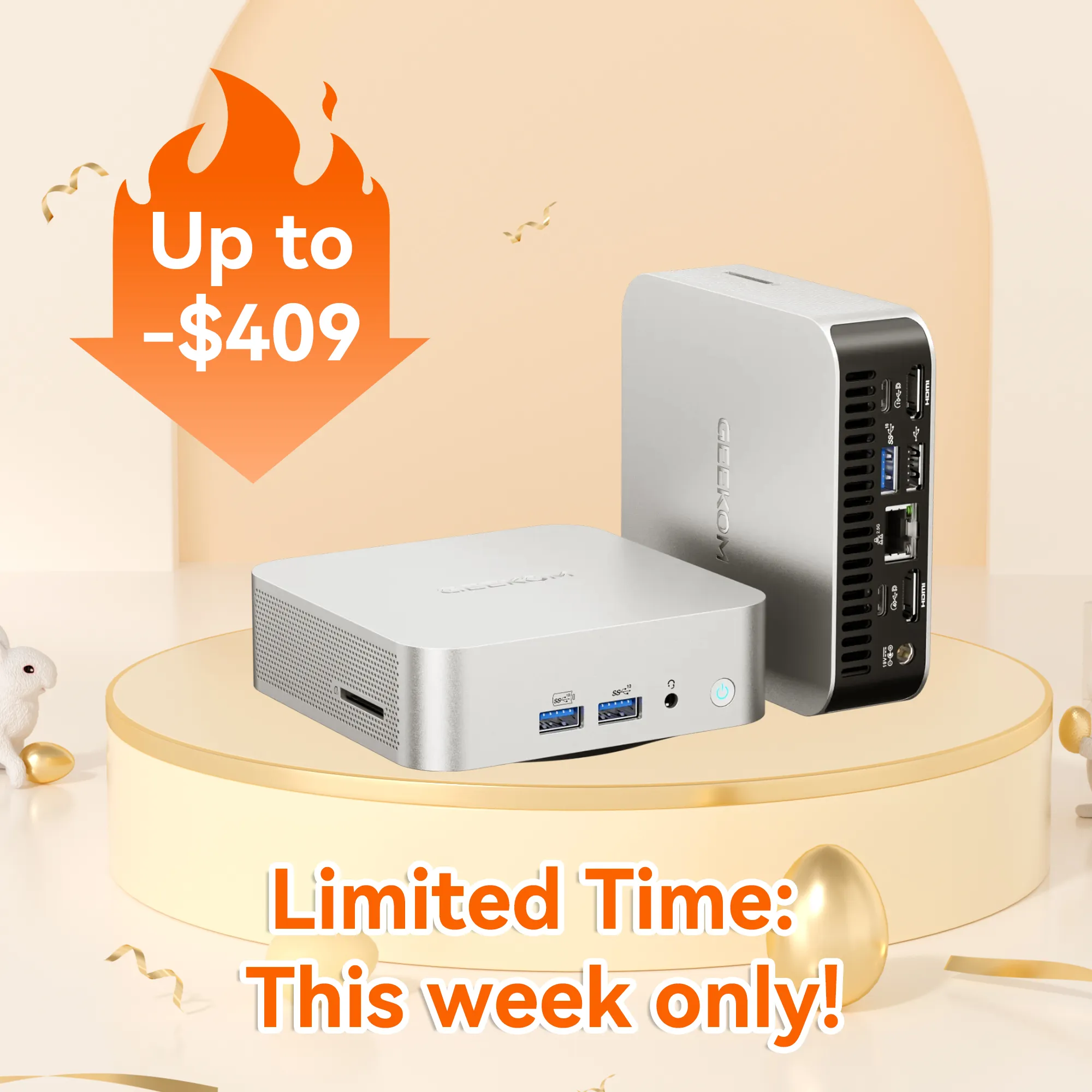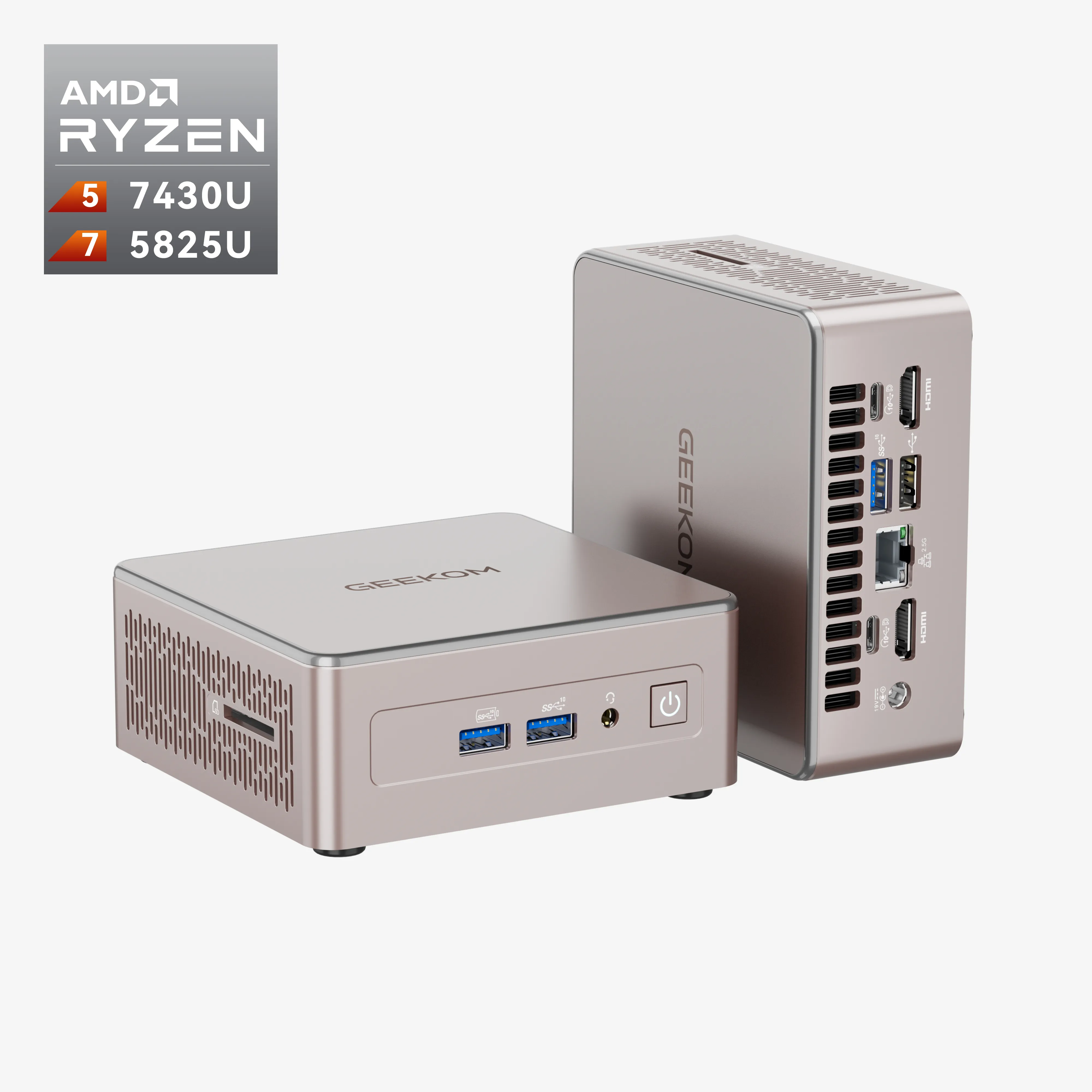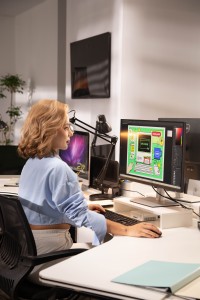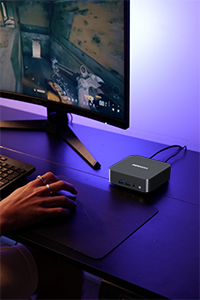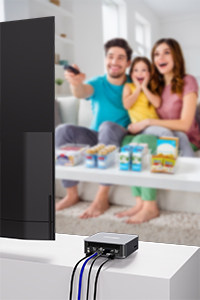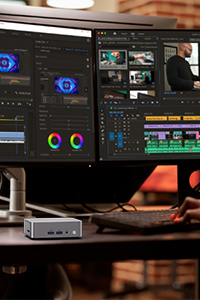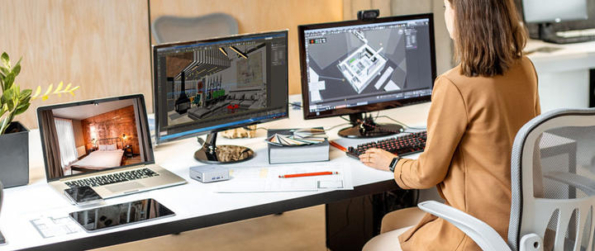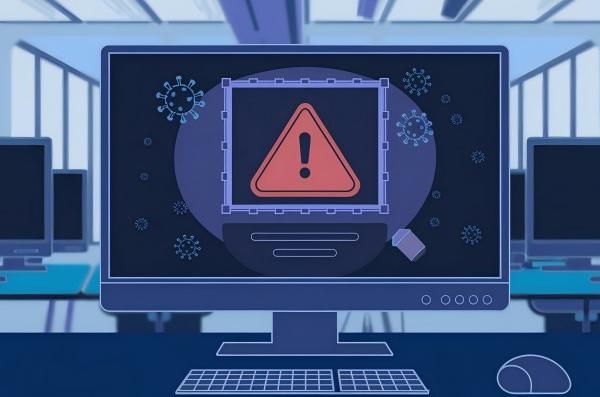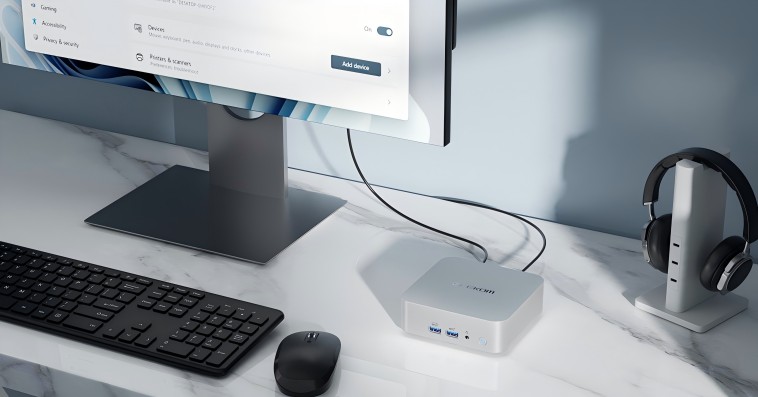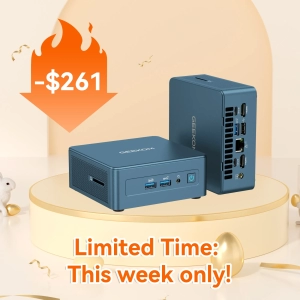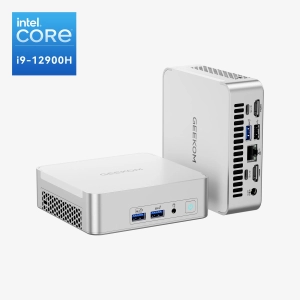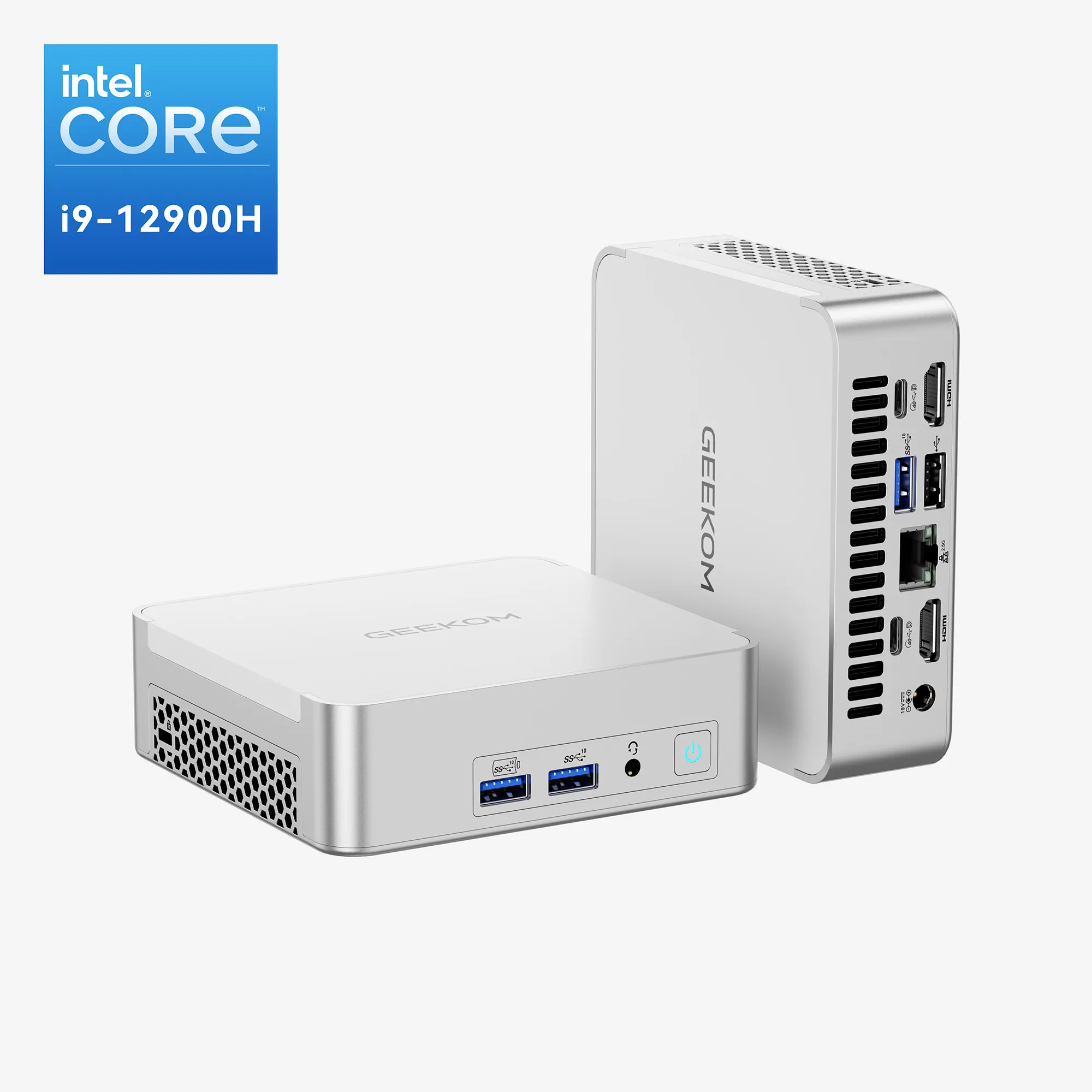It’s been a while, but computers have been constantly shrinking since they were first introduced in the 1940s. What started as mainframes filling a room and with raised floors to accommodate all of the cables interconnecting the different modules of the computer became the rack-mount mini computers of the 70s. The late 70s and early 80s launched the era of desktop computing. For a while, desktop computers followed the form factor of the original IBM PC, but other variations started to appear including laptops and vertical towers as well as mid-towers.
Towers and mid-towers are still popular, especially for gamers and business users, and laptops are more popular than ever, but newer form factors have recently emerged. Smaller desktop models, including the miniATX and miniITX, were primarily popular with home builders rather than vendors, though some vendors did introduce PCs in a somewhat small size. The start of the true Mini PC can probably be attributed to Intel’s introduction of the NUC (New Unit of Computing) in 2012.
The NUC measures about 4 x 4 x 1 or 2 inches and initially was just populated with a CPU. RAM and SSD memory needed to be installed by the user, as well as the operating system. Graphics were handled in most cases by GPUs embedded in the processor, though some later models offered the capability of optional discrete GPUs. Intel’s NUCs were offered with processors running from Celeron to Core i9s. These “Extreme” models (NUC 9 Extreme, NUC 11 Extreme, and NUC 12 Extreme were designed to accept graphics cards, but were all somewhat larger than the 4 x 4 x 1 size of the original NUC. Some of these support an external GPU (eGPU) using a Thunderbolt 3 port. Other vendors jumped on the Mini PC bandwagon. Gigabyte’s BRIX, Zotac ZBox, and ASRock Beebox were a few of the notable ones, with many of these upgraded over time and still on the market. NUCs from Intel, and later from other vendors, became popular when users were able to purchase PCs ready to run straight out of the box, with RAM and SSD storage, as well as Windows, preinstalled.
Do I Need a Desktop?
There are situations where a desktop makes sense. High-powered game playing is best if you are willing to spend the money, with a desktop fitted out with a very high-end graphics card, 128GB of RAM and one or more high-capacity SSDs or NVMe drives. This type of setup can easily cost several thousand dollars and with more than two large monitors, take up the better part of an entire desktop.
A network server is another use where a desktop might make sense, depending on how many concurrent users it needs to support. Having multiple expansion slots makes this application more suitable for a desktop or even rack-mount PC.
But if your needs or budget don’t support this type of PC approach, smaller PCs are the way to go. Small form factor PCs are somewhat downsized desktop PCs. They can run from about the size of a sheet of paper, and might, but probably don’t offer some of the expansion options of a full-size desktop.
But if you don’t need the expansion options provided by a desktop, a great alternative to a traditional desktop is a mini PC.
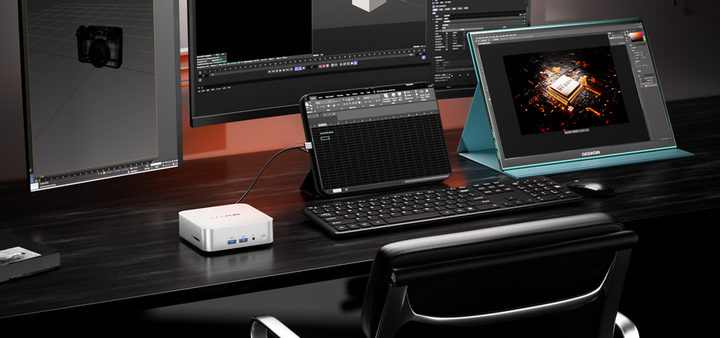
Mini PCs: The Best Desktop Replacement
For many users, a mini PC is going to be an excellent choice, especially when you need to buy a new or replacement computer. The typical mini PC measures about the same as the original Intel NUCs—about 4 x 4 x 1 (or 2) inches, but gives you the same practicality as many desktops. Their size makes it easy to mount them out of sight on the back of a monitor using a VESA mount bracket, which is often included in the box. While a mini PC isn’t going to take very much of your desktop, certainly nowhere as much as most desktop PCs will, it will take even less if you use the VESA mount to hang it on the rear of a display. The one caveat in doing this is it makes the ports difficult to reach, an annoyance if you frequently need to plug or unplug a USB or other cable. A second downside, or not depending on your plans, is that mini PCs generally have limited expandability when compared to desktops.
But while there are a few downsides of switching to a mini PC, they are greatly outweighed by the advantages a mini PC offers. The most obvious of these is size. A mini PC offers the performance and features of a much larger and more expensive desktop and provides these in a package that fits neatly on your desk or behind your monitor. As do desktops, mini PCs are available with a choice of processors. On the Intel side, PCs are available with processors ranging from an Intel Core N100 to a Core I9. Mini PCs also come in models with AMD Ryzen 5, Ryzen 7, and Ryzen 9 processors.
What Should I look for in a mini PC?
In choosing a mini PC, you should be considering the same things that you would in a desktop PC. What are you going to be using it for? Consider the applications and the system requirements to run them. Most applications list a minimum and recommended processor, RAM, storage, and operating system. Match your mini PC to the recommended requirements, and if you can afford it, configure an even more heavy-duty PC.
Unless you are going to be using very basic applications like web browsing, stay away from low-end CPUs like the N100 if you can. Suppose you can’t try and configure the system with as much RAM and storage as is available.
A Core i5 Core i7 or equivalent MD processor will be sufficient for most home, work, and school applications, including word processing and spreadsheets. Keep in mind, though, that every new release or new application will often require a more powerful system, so it makes sense to either purchase a fully loaded PC or, if you are capable of upgrading the RAM and/or storage, plan on doing so. Most current mini PCs come with 16GB or 32GB of RAM, and many can support up to 64 GB. Look for a PC that can support more storage than you think you’ll need. Many mini PCs have a bracket in the case that can accommodate a 2.5-inch SSD or a second NVMe drive as additional storage.
If you like to play the latest games, look to get the most powerful and highly-equipped mini PC you can. You won’t get the same performance as a several thousand-dollar desktop gaming machine, but a high-end mini PC should provide a good to great gaming experience.
What’s The Bottom Line?
Unless you have specialized needs or need to play the most recent games at high frame rates, a mini PC makes a lot of sense. If you hide a desktop PC and the equivalent mini PC behind a curtain and run the same applications on both, it’s unlikely you would be able to point to which was the mini PC. One thing to keep in mind is that all mini PCs use the laptop version of the particular processor. These are, in most cases, just about as powerful as the desktop version on the CPU, but they use less power and generate less heat.
So, the bottom line is that a mini PC should meet the needs of almost any user, like GEEKOM. They provide the power to run even complex applications and are great even for running a small or mid-size business. And one of the best reasons is that you’ll save a lot of money over buying a desktop PC with the same capabilities.

Ted Needleman
Ted Needleman has been writing reviews and columns on computers since the late 1970s. He has been a programer, DP Manager, Accountant, the Editor in Chief of a technology magazine, and the Director of a printer and scanner test lab.



